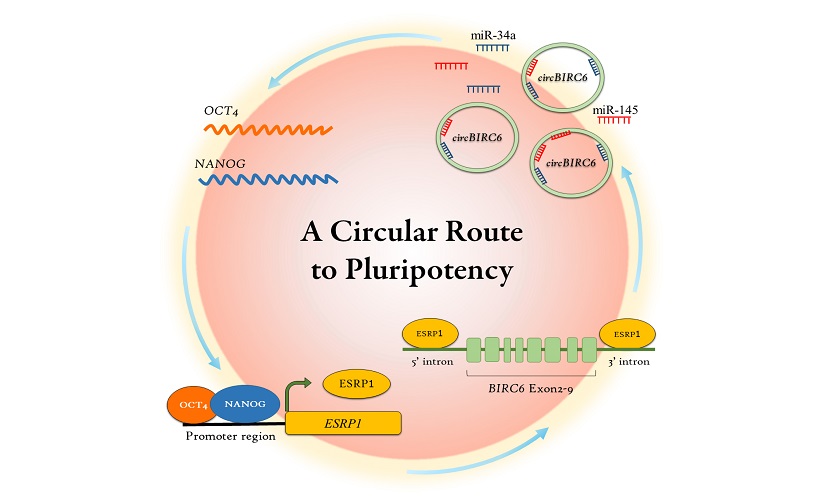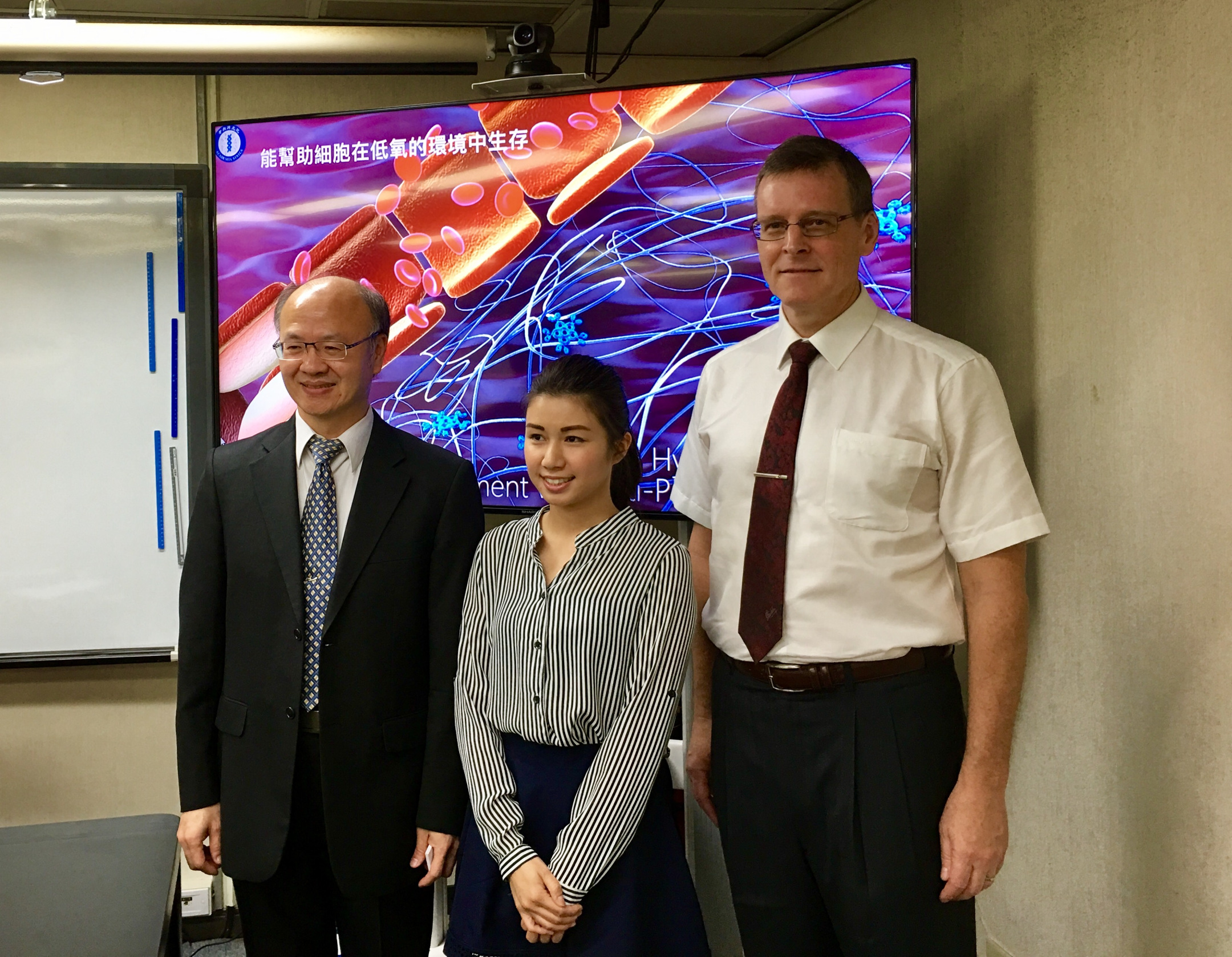
CircRNA – A Key to Unlocking Pluripotent Stem Cells for Regenerative Medicine or Other Innovative Medical Technologies
- News
- 2.9K
When cells in the human body become aged or injured, pluripotent stem cells may provide a means for repair. These cells can be induced to form a variety of different cell types and may be able to replace dysfunctional cells or regrow damaged tissues. Therefore, pluripotent stem cells may find their greatest use in the emerging field of regenerative medicine. In addition, pluripotent stem cells can be used to study developmental biology and disease pathogenesis or to facilitate new drug discovery. Many research and medical institutions around the world have begun to investigate clinical cell therapy and drug development applications that are based on such stem cells.

Image: To maintain the pluripotency of embryonic stem cells, NANOG and OCT4 co-regulate the expression of circBIRC6 through the RNA splicing factor (ESRP1). circBIRC6 then reciprocally promotes the expression of NANOG and OCT4 by regulating microRNAs (miR-34a and miR-145). IMAGE CREDIT Academia Sinica
Recently, a research team led by Dr. Hung-Chih Kuo, an Associate Research Fellow in the Institute of Cellular and Organismic Biology at Academia Sinica, has discovered a new mechanism that regulates pluripotency and differentiation machinery in cells. In this mechanism, circular RNA (circRNA) plays a functional role in determining whether a cell remains pluripotent or begins to differentiate. The research represents a major advance in understanding how pluripotency can be controlled and was published in Nature Communications.
Pluripotent stem cells include both “embryonic stem cells” (ESCs) and “induced pluripotent stem cells” (iPSCs). ESCs must be isolated from embryos and are not readily available. However, iPSCs can be directly derived from various somatic cell types, making them an ethical and potentially abundant source of pluripotent stem cells. This technology was pioneered by Dr. Shinya Yamanaka of Tokyo University, and the invention of iPSCs earned him the 2006 Nobel Prize in Medicine.
Despite the technical ability to produce iPSCs, the mechanisms by which pluripotent stem cells regulate pluripotency and early-lineage differentiation are not fully understood. The latest study by Dr. Kuo’s research team found that human pluripotent stem cells contain high levels of certain circRNAs, and one type of circRNA, circBIRC6, acts to regulate stem cell pluripotency. By manipulating the expression of circBIRC6, the researchers were able to direct pluripotent stem cells to either maintain pluripotency or initiate cellular differentiation (see figure).
The existence of circRNA is a recent discovery. Genes encoded in DNA have long been known to be transcribed into linear RNAs, which are then translated into proteins. However, it is now known that linear RNA molecules can also be back-spliced to join the 5′ and 3′ ends and form circRNAs. In the past, circRNAs were considered to be mistakes in RNA processing, but current research shows that circRNAs may have important functions, including the regulation of gene expression.
The results of the new study provide novel solutions to several major problems in realizing pluripotent stem cell applications, including the potential for nonspecific cell differentiation and carcinogenesis. Improving the control of pluripotency and differentiation by regulating circRNA expression may help scientists to generate specific somatic cell types from pluripotent stem cells or to produce better, more functional iPSCs. Thus, the use of circRNAs may provide a safer cell source for transplantation into patients. Through continued research on pluripotent cells, the team expects that effective application of pluripotent stem cells in regenerative medicine will provide critical innovations that will advance the capabilities of medical care.
Dr. Kuo also emphasized that circRNAs are not only useful in the potential implementation of pluripotent stem cell applications in the clinic. In addition, understanding the biology of circRNAs may also be helpful in the development of other innovative medical technologies such as diagnostic tools or treatments for the disease. The complete list of authors for the recent article is as follows: Chun-Ying Yu, Tung-Cheng Li, Yi-Ying Wu, Chan-Hsien Yeh, Wei Chiang, Ching-Yu Chuang, and Hung-Chih Kuo. This research study was conducted entirely at Academia Sinica and was supported by grants from Academia Sinica, the Ministry of Science and Technology (MOST), and the National Health Research Institute (NHRI). [Academia Sinica]
Journal Article
The circular RNA circBIRC6 participates in the molecular circuitry controlling human pluripotency
For the latest tech news and conversations, follow Research Stash on Twitter, Facebook, and subscribe to our YouTube channel.


